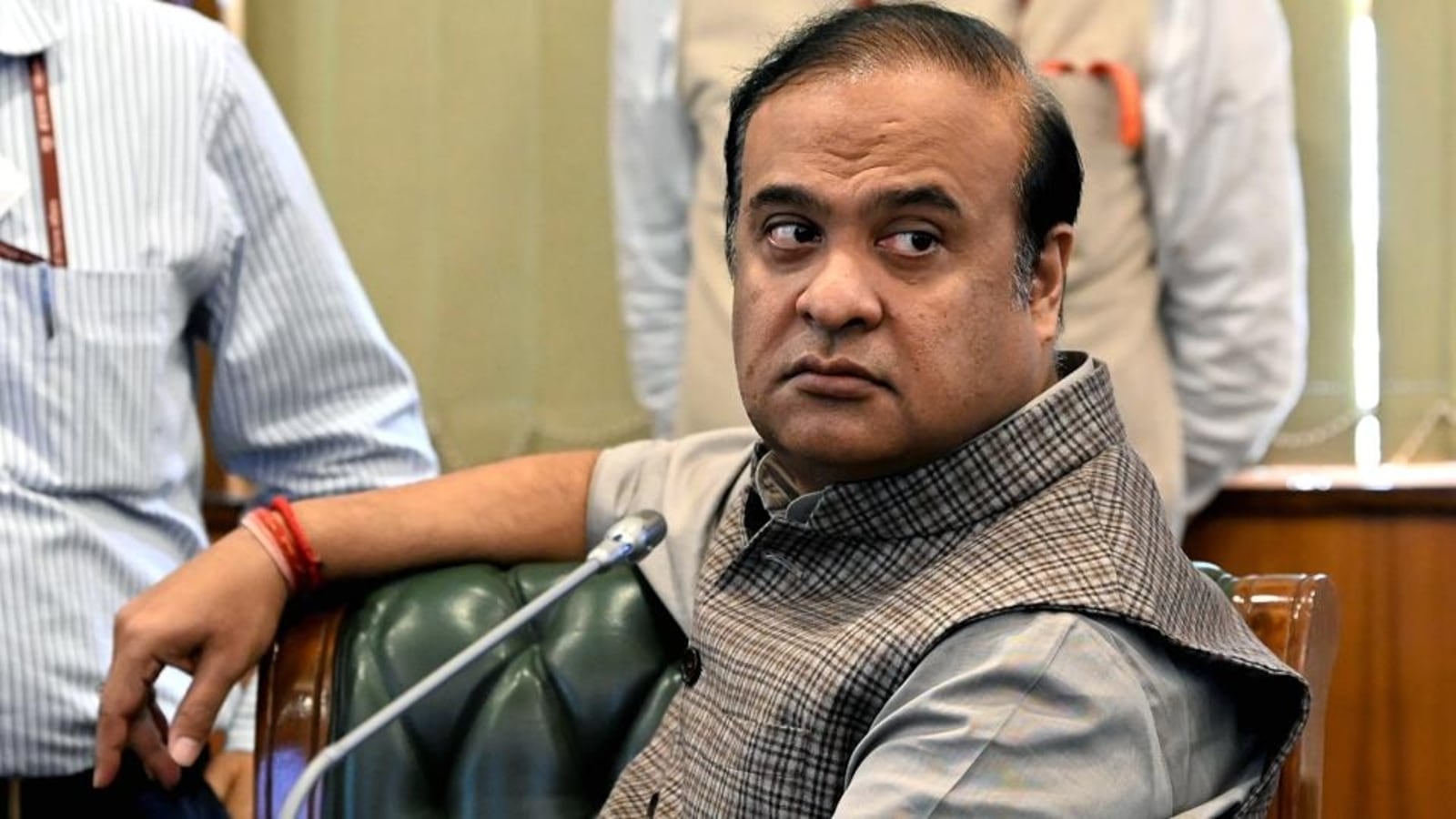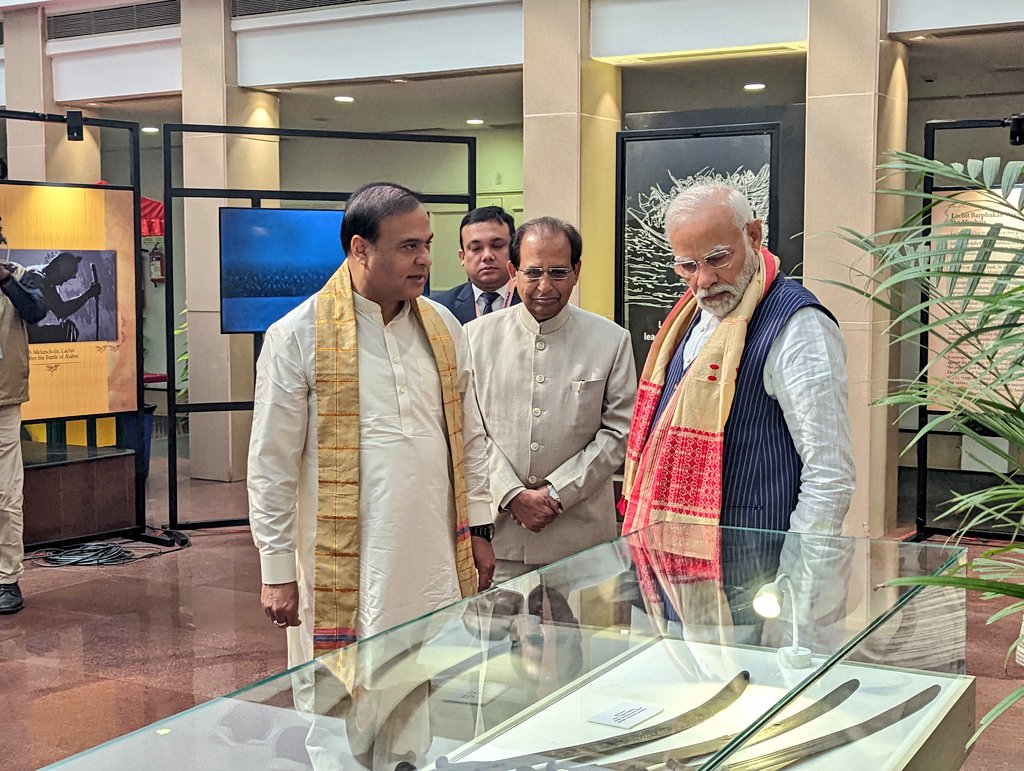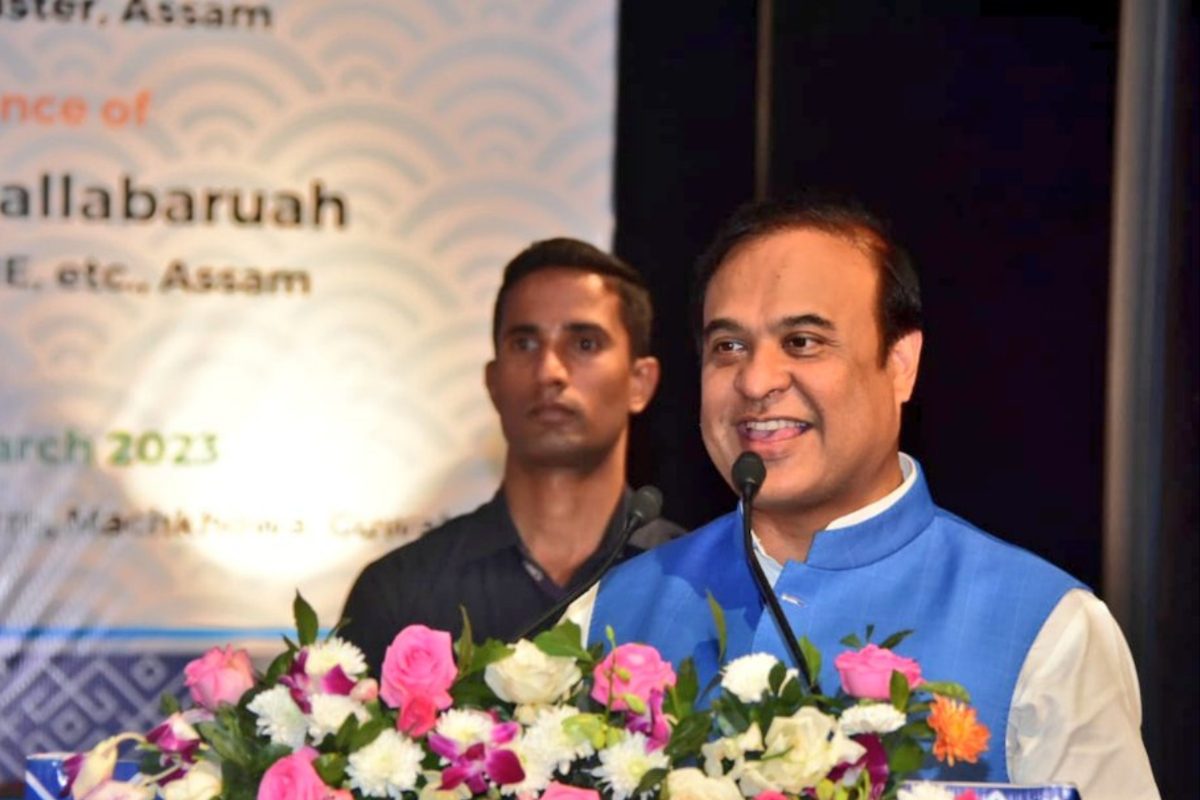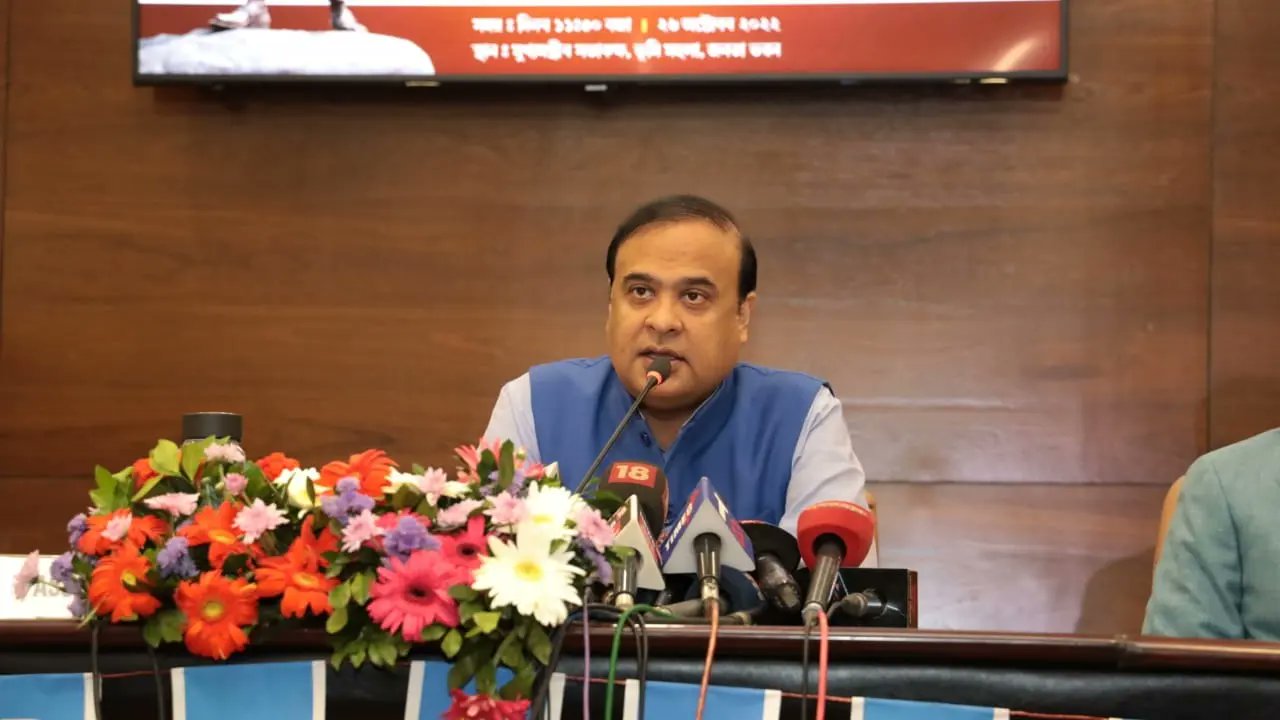Assam CM Himanta Biswa Sarma Advocates Ahom Hero to Challenge Anti-NRC/CAA Narrative, 2023

Assam CM Himanta Biswa Sarma Advocates Ahom Hero to Challenge Anti-NRC/CAA Narrative, 2023
Narrative, 2023 Assam has traditionally been a bilingual and multicultural state. The influx of outsiders to Assam is not a recent occurrence. Despite the presence of a deep-rooted sense of sub-nationalism in Assam, it reached its highest point during the Assam agitation in the late 1970s and early 1980s.
It went away until a few years ago, when the process of updating the National Register of Citizens (NRC) started, and Assam was rife with high-voltage rallies that brought back memories for the populace of the Assam agitation’s days after the controversial Citizenship Amendment (CAA) law was enacted in the parliament.

Assam has traditionally been a bilingual and multicultural state. The migration of strangers to Assam is not a new phenomenon. The identity of the natural indigenous inhabitants is quite elusive. Every tribe that resides here, almost all of them, appears to have come from different places and at other times.
Historically, the migratory pattern was altered by Assam’s inclusion into British India. The idea of “indigenous” and “outsiders” was differentiated, and a demand for the preservation of “Assamese identity” emerged.
Instead of being the result of simple self-discovery, the Assamese community’s identity was motivated by a fear of being displaced by demographic change. When they were attacked on economic and cultural fronts, the Assamese minority claimed their identity of language and culture to feel distinct. ‘Jatiyotabadi’, or sub-nationalism, as a political philosophy, was born out of this sense of singularity.
The politics of recognition and representation, which backed the growing demands of ethnic communities for their administrative structure, gave rise to a country inside a nation or sub-nationalism. At this point, it is crucial to recognize these groupings’ unique characteristics.
However, suppose other groups consider the state’s policy of respecting traditional institutions and including ethnic groups in decision-making bodies as a favour or a right won through political struggle. In that case, it may strengthen their ethnic emotions. Its effects can be seen in varied degrees.

Defining the phrase and its implications is feasible because sub-nationalism has evolved through time in Assam. Although there has always been migration from Bangladesh to Assam, after Bangladesh’s independence struggle in 1971, several lakhs of Hindu and Muslim refugees appeared there. \
In February 8, 1972, the Prime Ministers of India and Bangladesh released a joint statement wherein the Indian government pledged their full support to help Bangladesh in the daunting task of resettling the refugees and displaced individuals in the country. Not all refugees returned home; in search of employment, Bangladeshi migrants continued to travel to Assam and other parts of India.
Due to the state’s shifting population, language, culture, and the battle for resources, Assam’s high number of “outsiders” has created unease. Under the guidance and leadership of the All Assam Students Union (AASU), a solid populist movement that called for the expulsion of foreigners, they emerged in the 1980s.

The movement proclaimed a distinctive Assamese identity and, hence, citizenship. The concept of diversity was first established with the principle of “different but equal,” focused on the linguistic and cultural background of the Assamese community.
However, once the United Liberation Front of Assam (ULFA) took over the battle, it was defined as unequal development and discrimination. However, in 2023, these elements—the ULFA-I, the Assam movement, or the CAA protest—have lost their relevance to Assam’s political dynamics. However, many politicians who have held positions of authority in the state have always encouraged the idea of sub-nationalism.
No one is more so than Himanta Biswa Sarma. Furthermore, the Assam Chief Minister sought an alternative perspective and found Lachit Barphukan, an Ahom commander who fought valiantly alongside the Mughals to prevent them from conquering Assam in the 17th century, to contradict the AASU’s sub-nationalism idea of anti-CAA attitude.
Borphukan led the Ahom Army at the Battle of Saraighat (1671), defeating the Mughals under the command of Kachwaha Raja Ram Singh I. The Ahoms ruled Assam for 600 years (1228 to 1826) before the British took over the country through the Yandaboo Treaty. The Lachit Borphukan story is well-known in Assam, but the state’s BJP-led government has taken several steps to make it known throughout the country.
The 400th anniversary of Barphukan’s birth fell in 2022, and Himanta Biswa Sarma wasted no time seizing the chance to incite sub-nationalism, which may benefit the BJP politically. The state government held large-scale festivities to commemorate Lachit Barphukan’s 400th birthday. A four-day event was organized in the capital to honour the bravery of the Ahom General of the sixteenth century.
The Chief Minister requested essay competitions on Lachit Barphukan, and students, government workers, and others wrote approximately 4.3 million handwritten essays, setting a Guinness World Record for the most prominent online photo album of handwritten articles. The state government even has plans to erect two enormous statues of Lachit Barphukan; one, measuring 125 feet long, will soon be built in Jorhat, Assam, and another, measuring 84 metres, is being constructed in Ghaziabad, Uttar Pradesh.
Additionally, to highlight the bravery of the Ahom general throughout the nation, the state administration has partnered with a significant OTT platform to air a brief documentary about Barphukan’s life.
All of these endeavours by the state administration, headed by Himanta Biswa Sarma, eventually led to the creation of a sub-nationalism centred on the legendary Ahom warrior Lachit Barphukan.
Assam Chief Minister Himanta Biswa Sarma has chosen to shed light on the state’s historical narratives to counter the anti-National Register of Citizens (NRC) and Citizenship Amendment Act (CAA) perspective prevailing in some circles of the society.

The NRC and CAA have been contentious topics in the political landscape of Assam, and the country at large, since their inception. The NRC was implemented in Assam to identify and deport illegal immigrants.
At the same time, the CAA offers citizenship to persecuted non-Muslim minorities from Bangladesh, Pakistan, and Afghanistan who entered India before 2015. The main objections to these measures stem from concerns about potential discrimination, erosion of ethnic and cultural identities, and exacerbation of demographic changes.
To navigate these tensions, CM Sarma has chosen to spotlight the Ahom community, mainly focusing on the Ahom hero, Chaolung Sukapha, who established the Ahom kingdom in Assam.
CM Sarma’s move to foreground Ahom’s legacy signals an attempt to foster state-wide unity against a backdrop of divisive narratives and counter the anti-NRC/CAA perspective. It’s an attempt to bring to the forefront the historical and cultural richness of Assam’s indigenous communities and their long-standing resilience against external threats.
Chaolung Sukapha, the founder of the Ahom kingdom in the 13th century, symbolizes an iconic figure who successfully resisted invasions while promoting harmony among diverse ethnic groups. This narrative can emphasize Assam’s historical stand against illegal immigration and strengthen the need for laws like the NRC and CAA.

While history has often been the playground for political narratives, CM Sarma’s decision to prop up an Ahom hero is seen as a calculated move to garner popular support. Sukapha’s rule was marked by cultural assimilation and unity, and it’s a story that can be conveniently framed in line with the ruling party’s larger narrative surrounding the NRC and CAA.
Moreover, Sarma’s push for celebrating Ahom history extends beyond mere symbolism. His administration has proposed to make Sukapha’s anniversaries state-wide celebrations and introduce a comprehensive study of Ahom history in school curriculums. This underscores his intention of leveraging historical narratives for political advantage.
This recent move by the Chief Minister has led to mixed reactions. Supporters argue that Ahom’s history underlines the importance of protecting indigenous culture from external influences, validating the NRC and CAA’s objectives. Detractors, however, see it as an attempt to appropriate history for political gain.
Critics point out that portraying the Ahom kingdom as a symbol of anti-immigration sentiments can be problematic, as it oversimplifies history. They contend that the domain was known for its assimilation and inclusivity, and using it to further the cause of laws seen as discriminatory by some is a misrepresentation.
As Assam continues navigating the stormy waters of NRC and CAA debates, the spotlight on Ahom’s history reveals how the past can be used to shape contemporary political narratives. It’s a scenario that showcases how history, culture, and politics intersect in determining the course of societal discourse and public policy.

Time will tell if CM Sarma’s historical perspective will ease tensions around the NRC and CAA or if it will inadvertently further deepen divides. Whatever the outcome, the episode offers an intriguing insight into the complex dynamics of history, politics, and culture.




